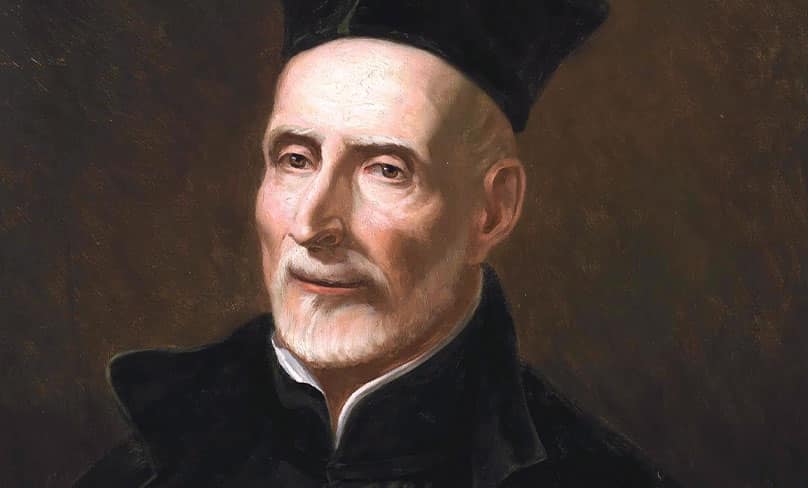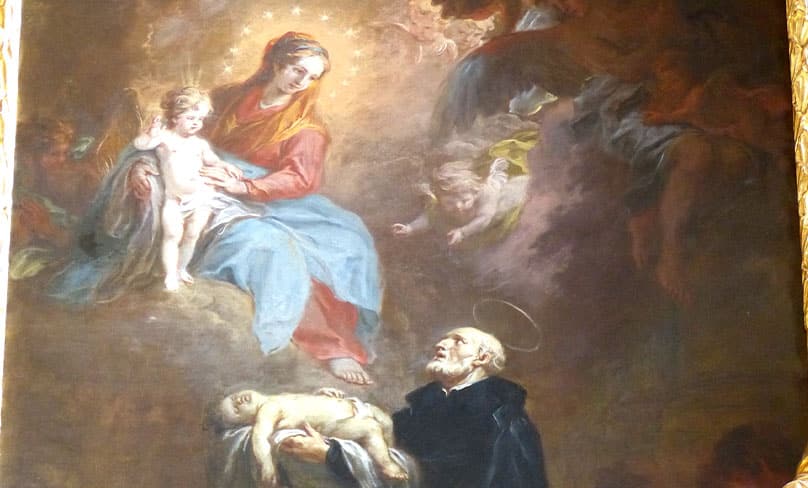
I recently attended a weekday Mass in honour of St Joseph Calasanz. I know nothing of him. Who was he?
St Joseph Calasanz is certainly a lesser known saint but nonetheless an important one.
He was born into a noble family in 1557 at the castle of Calasanz, near Peralta de la Sal, in Aragon, Spain, the youngest of eight children. His father was a minor nobleman and mayor of the town.
Joseph was educated first at home and then in the elementary school of Peralta.
When he was twelve his parents sent him for classical studies to a college in Estadilla run by the friars of the Trinitarian Order.
While there, at the age of fourteen, he felt the call to the priesthood, although his parents were not happy with his decision.
After secondary school Joseph studied philosophy and law in university, obtaining a Doctorate in Law. Then came studies of theology at two universities.
His mother and brother having died, his father wanted him to marry and look after the family, but a serious illness in 1582 brought Joseph to the point of death, after which his father relented.
Joseph was ordained a priest in 1583 and served in important posts in several dioceses.
In 1592, at the age of 35, St Joseph moved to Rome, where he spent most of his remaining fifty-six years.
There he found a protector in Cardinal Colonna, who appointed him his theologian and put him in charge of the spiritual direction of his staff.
He joined the Confraternity of Christian Doctrine and gathered boys from the streets to bring them to school.
In 1597, with the help of two other priests, he opened the first free public school in Europe.
After a devastating flood on Christmas Day in 1598, which caused thousands of deaths and left many people homeless and without food, St Joseph dedicated himself to helping the poor and assisting in the recovery.
In 1600 he opened his “Pious School” in the centre of Rome to provide free education for all, at a time when only the children of the elite received schooling.
In a short time there were some one thousand students in his care.
In 1602 St Joseph rented a house at Sant’ Andrea della Valle in Rome and commenced community life with his assistants, laying the foundation for what was to be the Order of the Pious Schools.
In 1617 Pope Paul V approved the new order, the first religious institute dedicated exclusively to the education of youth.
St Joseph and fourteen other priests received the habit as the first members of the institute on 25 March 1617.
In 1621 Pope Gregory XV approved the Order of Poor Clerics Regular of the Mother of God of the Pious Schools as a religious order with solemn vows.
It is more commonly known as the Piarists.
In addition to the traditional vows of poverty, chastity and obedience, the Piarists take a fourth vow to dedicate their lives to the education of youth.
In 1610 St Joseph wrote a document setting out the fundamental principles of his educational philosophy, including regulations for teachers and students.

In 1616, at his initiative, the first public and free school was opened in Frascati, outside of Rome, and in the following years Pious Schools were established all over Europe.
St Joseph accepted not only the poor but also Jews and Protestants into his schools.
Such was his fame that even the Ottoman Empire asked him to establish schools in their territory, something he could not do for lack of teachers.
He was concerned not only with the minds of his students but also with their physical education and health.
The students were taught to read Latin and the vernacular, and great emphasis was placed on mathematics and science.
But St Joseph’s main concern was for the moral and religious education of the students, considering education as the best way to change society.
He was the first educator to advocate the preventive method of anticipating and preventing mischievous behaviour rather than punishing it.
He favoured the mildest punishment possible. St John Bosco would later take up this method.
St Joseph died on 25 August 1648 at the age of 90.
He was beatified in 1748 and canonised in 1767. His feast day is August 25, the day of his death.
In 1948 Pope Pius XII declared him “Universal Patron of all Christian popular schools in the world.”
